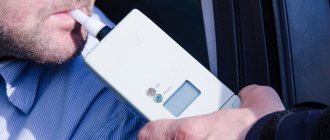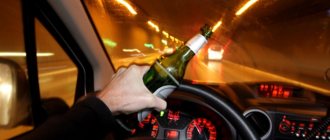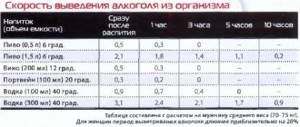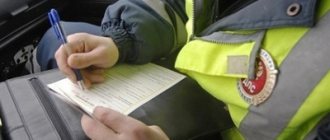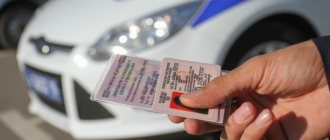How to check alcohol concentration
In practice, only three methods are used to determine the amount of alcohol in the human body.
- Breath test - the gas mixture exhaled from the lungs is passed through a breathalyzer. The device quickly records the concentration of ethanol in it. The test results are quite accurate.
- A urine test is the simplest option with a reliable result. For accurate measurements, you need to follow the rules for collecting urine, storing it, and transporting the material to the laboratory as quickly as possible.
- Blood testing is another reliable method with minimal error. Requires the intervention of a qualified physician - blood is taken from a vein for examination. Failure to follow the basic principles distorts the results.
The level of ethyl alcohol that is permissible for drivers varies in different countries, but there is a natural content - up to 0.35 ppm. This value serves as a general guideline. This indicator can be found in a non-drinker who has not consumed alcohol - after drinking kefir, kvass, or lactic acid products. This level is not taken into account as a state of alcoholic intoxication, and the figures above indicate that the person took drinks “with a degree”. At the same time, the first indicators of intoxication, initial changes in the functioning of the nervous system are observed at a concentration of 0.5 ‰ and higher.
Drivers can quickly determine how long to wait after drinking alcohol using the table below.
Permissible blood alcohol limit for a driver
The degree of driver intoxication is measured in ppm. To obtain the result, a potential traffic violator can have their exhaled air, blood, and urine checked. In the latter case, no traces of ethyl alcohol should be present in the analysis. According to amendments to the legislation made on July 23, 2003, the permissible alcohol content of a driver in the blood is 0.35 ppm, and in the exhaled air - 0.16. In the latter case, the permissible error of the breathalyzer should also be taken into account - 0.05 ppm.
Alcohol withdrawal duration table
The first two lines and the left column show the volume of drink and the person’s weight. The remaining cells show the time (in hours) that alcohol remains in the blood. This is average information calculated for forty percent vodka and five percent beer. When you drank something else, it is necessary to make adjustments, which will be discussed later.
| Weight in kilograms | Vodka | 50 ml | 100 ml | 150 ml | 200 ml | 250 ml |
| Beer | 1/2 l | 1 l | 1.5 l | 2 l | 2.5 l | |
| Up to 60 kg | 3 | 7 | 10 | 13 | 16 | |
| 60-70 kg | 3 | 6 | 8 | 11 | 14 | |
| 70-80 kg | 2 | 5 | 7 | 9 | 12 | |
| 80-90 kg | 2 | 4 | 6 | 8 | 10 | |
| 90-100 kg | 2 | 4 | 6 | 7 | 9 | |
| 100 kg and more | 2 | 3 | 5 | 7 | 8 | |
Note: These figures are based on middle-aged gentlemen. In women, the process of recycling ethyl alcohol is slower, so on average you need to add sixty minutes to the time indicated in the table.
Calculation algorithm
A hangover or intoxication complicates the calculations, so we explain the principle using two examples.
Example one
How long will it take for half a bottle of “white” to be eliminated from the body of a man weighing 95 kg?
Algorithm
- We are looking for a string with the required weight. This is the line “90-100 kg”.
- Convert half a bottle to displacement. The volume of one bottle is half a liter, which means half is 250 ml. We are looking for such a quantity in the columns.
- At the intersection of the line and column we look at the number - nine o'clock. After this period of time, the guy can drive the car.
Example two
The girl drank four small cans of beer. The girl's mass is 74 kg. How long after the tester does not record a single ppm?
Algorithm
- 74 kg is a weight between 70 and 80 kg, so we need the third line of the plate.
- One small aluminum can is 0.33 liters. We multiply this volume by four, we get 1.32 liters, that is, the third column.
- At the intersection we look at the result - seven hours. This is a male indicator, for a girl we remember the note and add another hour. Total: the tester will not record anything after eight hours.
Table of alcohol removal from the body
| Person's weight/alcohol | 60 kg | 70 kg | 80 kg | 90 kg | |
| Beer 4% | 100 | 35 min. | 30 min. | 25 min. | 20 minutes. |
| 300 | 1 hour 45 min. | 1 hour 30 min. | 1 hour 20 min. | 1 hour 10 min. | |
| 500 | 2 hours 55 min. | 2 hours 30 min. | 2 hours 10 min. | 2 hours | |
| Beer 6% | 100 | 55 min. | 45 min. | 40 min. | 35 min. |
| 300 | 2 hours 35 min. | 2 hours 15 min. | 2 hours | 1 hour 45 min. | |
| 500 | 4 hours 20 min. | 3 hours 50 min. | 3 hours 15 min. | 2 hours 55 min. | |
| Tonic 9% | 100 | 1 hour 20 min. | 1 hour | 55 min. | 50 min. |
| 300 | 3 hours 55 min. | 3 hours 20 min. | 2 hours 45 min. | 2 hours 35 min. | |
| 500 | 6 hours 30 min. | 5 hours 35 minutes | 4 hours 55 min. | 4 hours 25 min. | |
| Champagne 11% | 100 | 1 hour 35 min. | 1 hour 20 min. | 1 hour 10 min. | 1 hour |
| 300 | 4 hours 45 min. | 4 hours | 3 hours 35 minutes | 3 hours 10 min. | |
| 500 | 8 ocloc'k | 6 hours 50 min. | 6 hours | 5 hours 10 min. | |
| Port 18% | 100 | 2 hours 35 min. | 2 hours 15 min. | 2 hours | 1 hour 45 min. |
| 300 | 7 hours 55 min. | 6 hours 45 min. | 5 hours 55 minutes | 5 hours 15 minutes | |
| 500 | 11 hours 25 minutes | 11 hours 10 minutes | 9 hours 50 min. | 8 hours 45 min. | |
| Tincture 24% | 100 | 3 hours 30 min. | 3 hours | 2 hours 35 min. | 2 hours 20 min. |
| 300 | 10 hours 25 minutes | 9 o'clock | 7 hours 50 min. | 7 o'clock | |
| 500 | 17 hours 25 minutes | 14 hours 50 minutes | 13 hours | 11 hours 35 minutes | |
| Liqueur 30% | 100 | 4 hours 20 min. | 3 hours 45 min. | 3 hours 15 min. | 2 hours 55 min. |
| 300 | 13 hours | 11 hours 10 minutes | 9 hours 45 minutes | 8 hours 40 min. | |
| 500 | 21 hours 45 minutes | 18 hours 40 minutes | 16 hours 20 minutes | 14 hours 35 minutes | |
| Vodka 40% | 100 | 6 hours | 5 hours 30 min. | 4 hours 25 min. | 3 hours 45 min. |
| 300 | 17 hours 25 minutes | 14 hours 55 minutes | 13 hours 25 minutes | 11 hours 35 minutes | |
| 500 | 29 hours | 24 hours 55 minutes | 21 hours 45 minutes | 19 hours 20 minutes | |
| Cognac 42% | 100 | 6 hours | 5 hours 45 minutes | 4 hours 55 min. | 4 hours |
| 300 | 18 hours | 14 hours 55 minutes | 13 hours 55 minutes | 12 hours 10 minutes | |
| 500 | 30 hours 30 minutes | 24 hours 55 minutes | 22 hours 45 minutes | 20 hours 20 minutes | |
Conversion of various alcohols into vodka and beer
If the volume of alcohol you drink differs from five or forty, it is difficult to use the first scheme. It is required to convert the drink into conditional vodka using a special coefficient.
Table 2. Conversion of drinks to vodka
| Name | Rum | Tequila | Absinthe | Cognac | Whiskey |
| Coefficient | 1,5 | 1,125 | 1,75 | 1,125 | 1,25 |
Explanation
The number depends on the degree of consumption and the presence of fusel oils and tannins, which slow down and complicate the elimination of alcohol. That is why, with the same strength of vodka and cognac, the latter “dissipates” longer.
Table 3. Conversion of low-alcohol drinks to beer volumes
| Name | Kvass vigorous | Wine | Strong beers | Vermouth | El |
| Coefficient | 0,24 | 2,4 | 1,6 | 3,6 | 0,72 |
Explanation
The added factor depends on the sugar content and strength of the particular drink.
How to use tables 2 and 3
To calculate the amount drunk, you need to multiply the volume of the drink by the number indicated on the plate. After this, you can use the first diagram, from which it will become clear when you are allowed to drive.
How to calculate correction factors
If you drink a drink that is not on the lists above, you can convert it to conditional alcohol yourself. Example of calculation: degrees of vodka - 40%, dark rum - 60%. Dividing these numbers, we get the required number: 60/40. The answer is 1.5: 1 liter of rum is equivalent in level of intoxication to one and a half liters of vodka, and half a liter of rum is 0.75 liters in vodka equivalent.
In the North Caucasus they love mulberry - a tincture made from mulberry fruits. Mulberry strength is 75%. Converting to vodka equivalent: 75/40. The answer is 1.875. Every 100 g of mulberry is equivalent to 187.5 g of “white” mulberry. Using the alcohol withdrawal label, we understand that after consuming this amount, you can drive a car on average after seven hours. Take your own weight into account in your calculations - the result will be more accurate.
A similar algorithm for intoxicating types and low-alcohol cocktails. Look at the number of turns on the bottle or can, divide the number by five. For example, we drink strong craft beer or a cocktail with a speed of 10 degrees. We calculate the value: 10/5. We get a coefficient of two: one can of strong hops or cocktail is equivalent in degree of intoxication to two cans of “average” beer. If you drank three half-liter cocktail jars, then multiply the three by the correction factor, we get 6. Convert to liters, it comes out to three. We look at the time of elimination from the body - from nine hours for men, from ten for women. A more accurate determination requires taking into account body weight.
What is the accuracy of the calculations
Table methods, calculators on the Internet - theoretical methods based on average statistical measurements. The time for complete withdrawal is individual and may vary even for the same person. Factors influencing sobering up:
- health status;
- degree of fatigue;
- psychological and physical condition;
- taking medications;
- drinking speed;
- air temperature;
- metabolic rate;
- age - in boys, girls and old people, elimination is slower, toxins are more active than in middle-aged people.
The tabular data is not a complete guarantee that in a specific time the “degree” will completely disappear and the breathalyzer will show zero values. This is more of a recommendation to help you figure out when to get behind the wheel and how long it will take to sober up.
A breathalyzer will help you find out exactly whether you can go on the road: a value of 0.16 mg or lower for each liter of exhaled gas mixture allows you to drive without the risk of receiving a fine. Sixteen hundredths of a milligram in ppm equals 0.34 ‰.
The rate of elimination of the breakdown products of ethyl alcohol depends on the rate of intoxication: a person who gets drunk faster is more likely to sober up more quickly. To be completely sure, it is better to add one or two hours to the table data before driving.
How much alcohol is removed (from the blood)
The rate at which alcohol is eliminated from the human body depends on:
- quantity and strength of alcoholic beverages; - volume and composition of foods eaten; - age, weight and gender; - general health.
We also want to warn against drinking alcoholic beverages in parallel with the use of medications, which can lead to very serious health problems (including stroke).
shutterstock.com
It is extremely important not to drink alcohol on an empty stomach. If you do not adhere to this rule, the concentration of alcohol in your blood will reach a maximum after 55 minutes, while on a full stomach the processes of alcohol absorption slow down, and the maximum alcohol in the blood is observed only after two hours.
In the first half of the last century, Swedish chemist Erik Widmark experimentally determined that the rate of elimination of alcohol from the body of the average person is 0.15 ppm per hour. But modern scientists question the accuracy of these calculations.
How long to wait before a secure check
The question of how much time should pass from the moment of the feast does not have a clear answer for everyone. Permille standards have changed in recent years in Russia. The acceptable limit today is completely zero, but a small error of 0.3 ppm is not a reason to punish drivers. The amendment was adopted due to medicines that may contain ethanol, devices that distort the value and have errors. The threshold concentration is 0.16 mg of alcohol per liter of exhaled air, in the blood - 0.34 ppm. This is enough to avoid fines for drivers taking medications, but you cannot drink anything stronger than kvass before the road.
Below are the experimental data. In it, a fifty-year-old man weighing 75 kg drank various drinks, and after a while measurements were taken with a tester. The ppm level is at the intersection of columns and rows. The values at which you can drive are highlighted in red.
| Hours after consumption | Beer, 3 liters | Vodka, 0.33 liters | Wine, two bottles. | Vodka, one bottle. |
| 12 | 0,48 | 0,39 | 0,51 | 0,68 |
| 13 | 0,44 | 0,27 | 0,41 | 0,61 |
| 14 | 0,27 | 0,16 | 0,32 | 0,54 |
| 14,5 | 0,00 | |||
| 15 | 0,14 | 0,23 | 0,48 | |
| 15,5 | 0,00 | |||
| 16 | 0,18 | 0,35 | ||
| 17 | 0,11 | 0,21 | ||
| 17,5 | 0,00 | |||
| 18 | 0,11 | |||
| 18,5 | 0,00 |
According to this scheme, it is obvious: an additional hour of waiting is enough to significantly reduce the breathalyzer readings.
What to do?
You can speed up the removal of alcohol from the blood: methods are based on increasing metabolism. However, it will be possible to reduce the time to complete “zeroing” only slightly – up to half an hour. Interestingly, people who regularly drink small doses of alcohol sober up faster: the liver copes with breakdown products at a higher rate than in a person who drinks rarely. What will help speed up the process?
- Active physical activity, cheerful and energetic exercises.
- Sauna or steam bath, if there are no contraindications: high blood pressure, heart problems, chronic diseases of the blood vessels. Drinking after bath procedures is prohibited; only water or weak tea is acceptable.
- Thiamine, ascorbic acid, found in fruits.
- Minerals from pharmaceutical complexes, vegetables.
- Dietary foods that help the liver, eliminating fried, fatty, and sweet foods from the diet.
- Drink plenty of clean water, herbal infusions, milk, if the stomach and intestines take lactose.
- Breathing exercises, deep breaths, quitting smoking.
- Walking walk, contrast shower.
After such measures, carry out a test with a device - only it will give you confidence in the zero alcohol level. Please note that such measures help remove alcohol, but do not affect the appearance of the smell of fumes.
How to speed up elimination
For a driver or a person who needs to go to work soon, it is important to make the sobering up process quick. Accelerating the removal of alcohol from the body means “stimulating” metabolism and stimulating the excretory system.
It is impossible to become completely sober in a couple of minutes by any known method. But you can speed up this process a little and improve your overall well-being, and muffle the symptoms of intoxication. The three most important ways:
- Take a product with adsorbing properties.
Activated carbon, Polysorb, Enterosgel - these drugs absorb alcohol and remove it faster in urine or feces. It is better to take them both before drinking and immediately after drinking strong drinks. The removal of alcohol from sorbents is accelerated by 10–15%.
- Artificially cleanse the gastrointestinal tract.
You will have to resort to unpleasant procedures - induce vomiting, do an enema, or take a laxative or diuretic. On average, this speeds up sobering up by 15–25%. It is only important to resort to the listed methods immediately after drinking alcohol, before it has time to be absorbed from the stomach and intestines into the blood.
- Stimulate metabolism by irritating receptors.
You can breathe in cotton wool with ammonia, take an ice-cold shower, pat yourself on the cheeks and body. Such activities stimulate the central nervous system, disperse blood through the vessels, and improve metabolism. On average, alcohol elimination will accelerate by 5–7%.
There are popular accelerations for faster sobering. For example, many advise after drinking alcohol to take a cocktail of 250 ml of warm water with 2 teaspoons of honey, ginger and juice squeezed from a small lemon. You can also eat unsweetened oatmeal jelly - it coats the stomach and promotes the accelerated elimination of alcohol from the body.
Time for a man to sober up
Average data will help calculate the period of elimination of alcohol from the male body.
A physically healthy eighty-kilogram man after 50-80 milliliters of cognac - one glass - will completely sober up in four hours. After a bottle of drink, a day should pass.
One hundred grams of “little white” will be excreted in five to six hours, but 250-500 grams will be excreted in a whole day, the relationship is not linear.
A bottle of regular hops lasts for three hours, but strong types – ten to fourteen turns – take longer, up to 8 hours.
Champagne - seven to eleven degrees - will affect the readings of the device for up to seven hours (volume - one bottle).
Factors influencing the rate of alcohol elimination
As already mentioned, alcohol leaves a person’s blood at an individual rate for each person. It depends on many factors. So, the circumstances that influence the rate of elimination of alcohol from the blood:
- Liver health level. The healthier a person is, the faster the body processes alcohol.
- Features of drinking drinks.
- Snack. A hearty snack prevents you from drinking too much alcohol.
- Physical indicators of a person.
- Attitude to alcohol. Often, a person who abuses alcohol will be less drunk when drinking the same volume of drink, compared to a “newbie”.
- Emotional condition. In a depressed mood, alcohol has a stronger effect on the body.
- Environment. In a stuffy, smoky room, alcohol intoxication occurs faster, and the body’s processing of alcohol, on the contrary, is slower.
- Physical state. During the period of illness or after it, the human body is weak, and therefore is not able to quickly process and eliminate alcohol.
How long does a woman stay sober?
The body weight of the fair sex is usually less than that of men. There is also a difference in metabolic rate, liver efficiency, and removal of harmful substances. Ladies get drunk faster, but take longer to sober up, possibly causing a hangover. The rate of disposal of toxic products for ladies is twenty percent lower than for men.
A glass of champagne will intoxicate the ladies for a couple of hours; a glass of semi-sweet or dry wine will “dissipate” after nine hours. Fortified wines last longer. A bottle of intoxicating beer takes four to five hours to mature, while strong and craft varieties take three to four hours longer.
A shot of vodka, a glass of cognac, one hundred grams of strong liqueurs prevents driving for ten to twelve hours, and a half dose – for seven.
The speed of sobering up depends on the woman’s age, health status, hormonal levels, and metabolic level.
